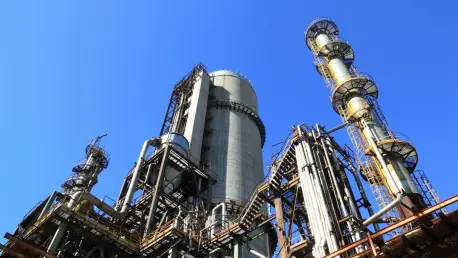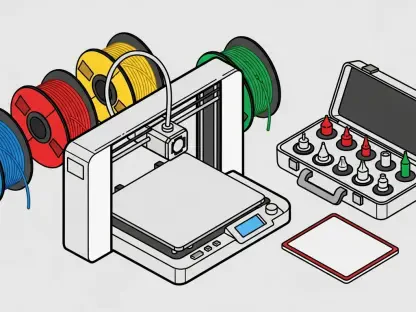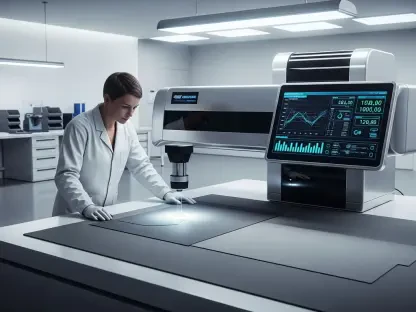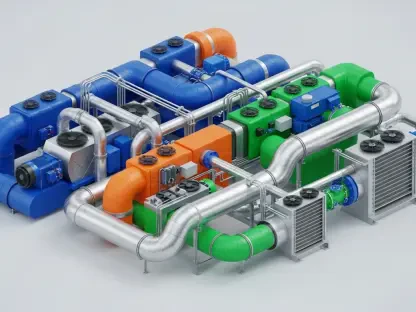In a groundbreaking move for both the pharmaceutical industry and the state of Virginia, Eli Lilly & Company, an Indiana-based titan in drug manufacturing, has committed an impressive $5 billion to build a cutting-edge facility in Goochland County. This substantial investment, announced at Richmond’s Main Street Station by Lilly’s chair and CEO Dave Ricks, marks the company’s first venture into Virginia and its inaugural plant dedicated solely to producing treatments for cancer and autoimmune diseases. The decision to establish a presence in the central Virginia region not only highlights Lilly’s confidence in the area’s potential but also positions the state as an emerging powerhouse in pharmaceutical production. With this development, Virginia stands to gain significant economic benefits while contributing to a national effort to secure domestic drug supply chains. The scale of this project, far exceeding initial expectations, underscores a strategic focus on innovation and resilience in healthcare manufacturing.
Economic Impact on Virginia
The establishment of Eli Lilly’s new manufacturing plant in Goochland County promises to be a transformative force for the local economy, bringing with it a wave of job opportunities and infrastructure growth. The facility is expected to create 650 permanent, high-paying factory positions, offering stable employment for skilled workers in the region. Additionally, the construction phase will generate around 1,800 temporary jobs, providing a short-term economic boost to contractors and related industries. Situated about 60 miles northwest of another burgeoning pharmaceutical center in Petersburg, the Goochland plant strengthens Virginia’s reputation as a hub for cutting-edge drug production. Governor Glenn Youngkin has described this investment as a landmark achievement, noting that it surpasses the original plan of $2.148 billion, which anticipated fewer jobs. This expanded commitment reflects a deeper trust in the state’s workforce and economic environment, setting a precedent for future industrial projects.
Beyond immediate job creation, this investment is poised to have a ripple effect on Virginia’s economy by attracting ancillary businesses and fostering community development. The influx of high-paying roles will likely increase local spending, benefiting small businesses and service providers in Goochland County and surrounding areas. Moreover, the presence of a global leader like Eli Lilly could draw other pharmaceutical companies to the region, further solidifying Virginia’s status as a competitive player in the industry. The state’s leadership has emphasized the long-term benefits of such projects, highlighting how they contribute to economic diversification and stability. This initiative also aligns with broader goals of workforce development, as it may encourage educational institutions to tailor programs toward pharmaceutical manufacturing skills. As a result, the project not only addresses current employment needs but also builds a foundation for sustained economic vitality in central Virginia over the coming years.
Strengthening Domestic Supply Chains
A critical driver behind Eli Lilly’s $5 billion investment is the urgent need to bolster domestic pharmaceutical manufacturing and reduce reliance on foreign supply chains, particularly from regions where geopolitical tensions could disrupt access to essential medicines. By establishing this facility in Virginia, the company is taking a significant step toward ensuring a stable supply of critical drugs for cancer and autoimmune conditions, which are vital to millions of Americans. This move resonates with a national push to enhance economic resilience and safeguard public health by localizing production. The strategic importance of such efforts cannot be overstated, as disruptions in global supply chains have previously exposed vulnerabilities in the U.S. healthcare system. State leaders and industry experts view this development as a proactive measure to mitigate risks and secure America’s pharmaceutical future.
The focus on domestic production also ties into broader themes of national security and economic independence, as highlighted during the announcement by both Lilly executives and Virginia officials. The Goochland facility represents more than just a manufacturing site; it symbolizes a commitment to protecting the nation’s ability to respond to health crises without dependence on overseas suppliers. This initiative complements similar efforts across the country, where other pharmaceutical giants are also investing in U.S.-based production. Virginia’s emergence as a key player in this sector, alongside other hubs like Petersburg, where Novo Nordisk operates, underscores a growing trend of industry clustering. Such concentration fosters collaboration, innovation, and efficiency, further strengthening the domestic landscape. The consensus among stakeholders is clear: investments like these are essential for building a robust framework that prioritizes both health security and economic growth in an increasingly uncertain global environment.
Virginia’s Rise as a Pharmaceutical Hub
Virginia’s appeal as a destination for pharmaceutical giants is becoming increasingly evident, with Eli Lilly’s new plant joining a roster of significant industry players establishing roots in the state. Beyond Lilly, companies like Novo Nordisk, Phlow, and the nonprofit Civica Rx have set up operations in Petersburg, transforming the area into a notable manufacturing cluster. Additionally, AstraZeneca has expressed intentions for a multibillion-dollar facility elsewhere in Virginia, further cementing the state’s growing reputation. This convergence of industry leaders highlights Virginia’s strategic advantages, including its proximity to major markets, skilled labor pool, and supportive business climate. Governor Youngkin has championed these developments as evidence of the state’s leadership in innovative sectors, positioning it for sustained growth and influence in pharmaceutical production over the long term.
The clustering of pharmaceutical operations in Virginia offers unique opportunities for synergy and innovation, as companies can share resources, expertise, and infrastructure to drive advancements in drug development. This collaborative environment is likely to attract further investment, creating a virtuous cycle of growth and opportunity. The presence of multiple global players also elevates the state’s profile on the national stage, potentially influencing policy decisions and funding allocations that favor domestic manufacturing. For local communities, this trend translates into not just jobs but also enhanced access to cutting-edge medical technologies and treatments. As Virginia continues to build on this momentum, the state is well on its way to becoming a cornerstone of the U.S. pharmaceutical industry, with the Goochland facility serving as a flagship example of what strategic investment and vision can achieve in reshaping regional and national priorities.
Building a Resilient Future
Looking back, the announcement of Eli Lilly’s $5 billion investment in Goochland County stood as a defining moment for Virginia’s economic landscape and the broader U.S. pharmaceutical sector. It marked a decisive step toward addressing vulnerabilities in drug supply chains while delivering substantial benefits to local communities through job creation and industrial growth. Reflecting on the project’s impact, it became clear that such initiatives were pivotal in redefining national priorities around health security. Moving forward, stakeholders should focus on sustaining this momentum by fostering policies that encourage further domestic investment and innovation. Collaborative efforts between government, industry, and educational institutions could ensure a skilled workforce to support expanding operations. Additionally, leveraging Virginia’s growing status as a pharmaceutical hub to attract more global players might solidify its role as a leader in this critical field, paving the way for a more resilient and self-sufficient future in healthcare manufacturing.









